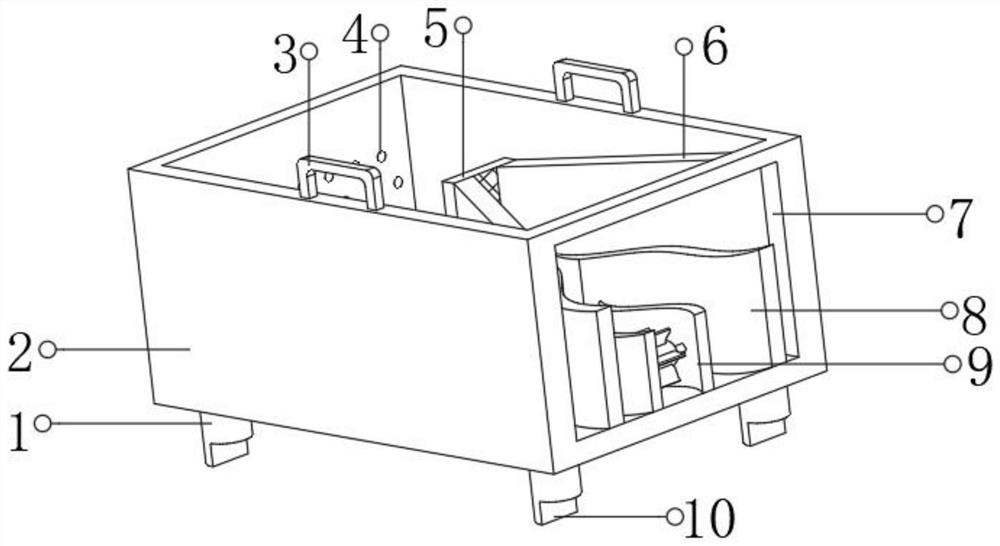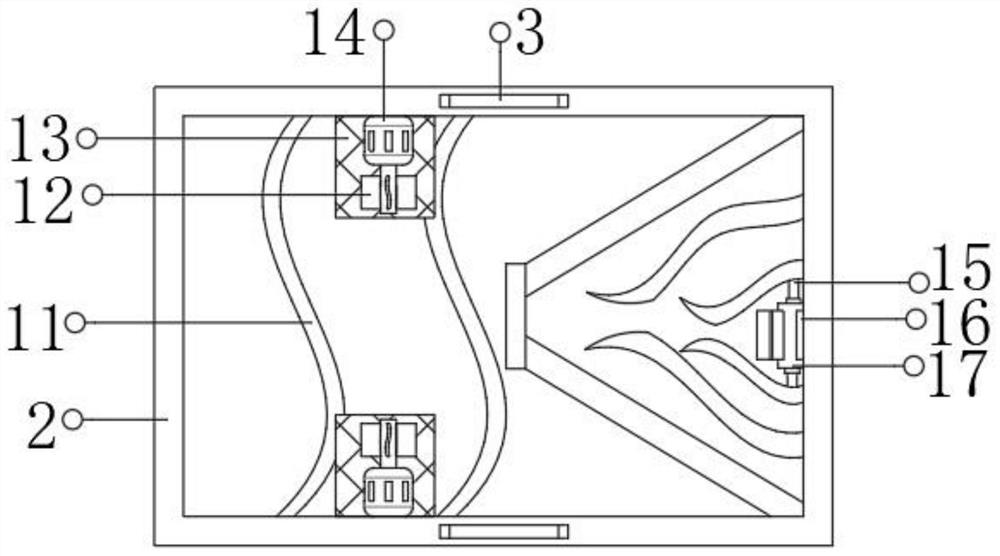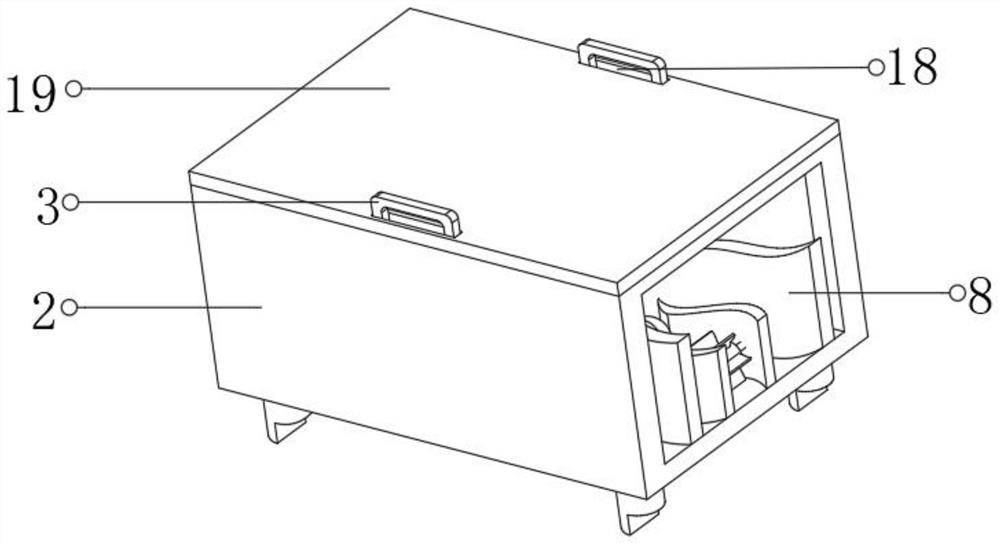Tadpole seedling collecting device
A collection device and seedling technology, applied in fish farming, application, animal husbandry, etc., can solve the problems of being unable to isolate other organisms and low collection efficiency, and achieve the effect of avoiding direct sunlight and improving collection efficiency
- Summary
- Abstract
- Description
- Claims
- Application Information
AI Technical Summary
Problems solved by technology
Method used
Image
Examples
Embodiment 1
[0026] refer to Figure 1-2 , a kind of tadpole seedling collecting device, comprises collection box 2, and the outer wall of collection box 2 one side has breach 7, and both ends of the bottom inner wall side of collection box 2 are all connected with first wave plate 8 by bolt, and collection box 2 bottom inner walls one Both ends of the side are connected with a second wave plate 9 by bolts, and the second wave plate 9 is located inside the two first wave plates 8, and the outer walls of the opposite side of the two second wave plates 9 are connected with a fixing rod by bolts. 15, and the rotating ring 17 is connected between the fixed rods 15, and the outer wall of the rotating ring 17 is connected with a plurality of fan blades 16 by bolts, and the fan blades 16 are wave-shaped structures, and the collection box 2 is close to the side of the first wave plate 8 Both ends are connected to the limiting plate 6 by bolts, and the feeding mesh plate 5 is connected between the ...
Embodiment 2
[0030] refer to image 3 , a kind of tadpole seedling collection device, present embodiment is compared with embodiment 1, and collection box 2 top outer walls are covered with box lid 19, and box lid 19 tops have two grooves 18, and two grooves 18 are just in line with handle Rod 3 matches.
[0031] Working principle: When in use, first raise the handle bar 3 to place the collection box 2 downstream of the water flow, and put the gap 7 facing the water flow, so that the water flows through the inside of the collection box 2, and then insert the support column 1 into the soil to set a limit The groove 10 makes the fixing more stable, and the tadpoles will enter the collection box 2 from the first wave plate 8 and the second wave plate 9 along with the water flow, and the two wave-shaped structures can limit other larger organisms from entering the collection box In 2, the collected tadpoles are eaten, and the fan blade 16 arranged on the swivel 17 rotates with the flow direct...
PUM
 Login to View More
Login to View More Abstract
Description
Claims
Application Information
 Login to View More
Login to View More - R&D
- Intellectual Property
- Life Sciences
- Materials
- Tech Scout
- Unparalleled Data Quality
- Higher Quality Content
- 60% Fewer Hallucinations
Browse by: Latest US Patents, China's latest patents, Technical Efficacy Thesaurus, Application Domain, Technology Topic, Popular Technical Reports.
© 2025 PatSnap. All rights reserved.Legal|Privacy policy|Modern Slavery Act Transparency Statement|Sitemap|About US| Contact US: help@patsnap.com



